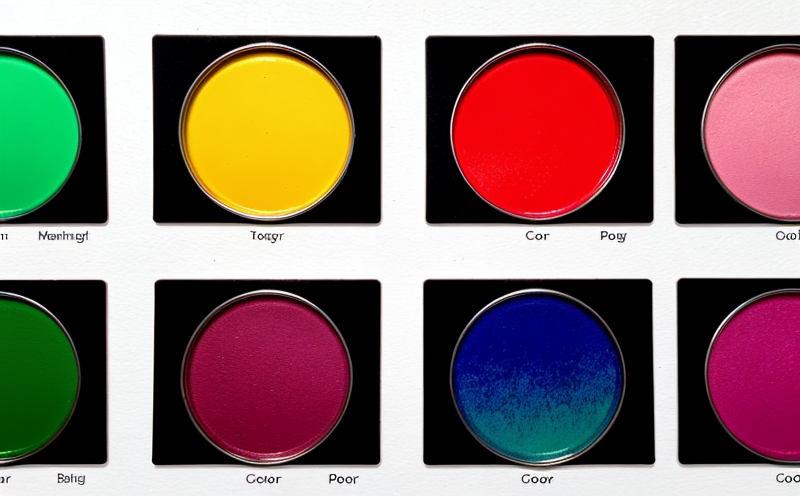CIE 177 Colour Rendering Testing of LED Light Sources
The CIE (Commission Internationale de l'Éclairage) Standard 177 is a critical tool used by lighting professionals to assess the colour rendering properties of light sources, particularly focusing on LED technology. This standard provides a standardized method for evaluating how accurately and faithfully different types of illumination reproduce colours in comparison to a reference illuminant.
The CIE 177 test involves measuring the colour appearance of individual objects under various test conditions with an array of light sources. The purpose is to ensure that LED lights meet specific criteria regarding their ability to render colours accurately, which is essential for industries ranging from retail and hospitality to healthcare and automotive.
In this testing procedure, a set of standardised reference illuminants is used alongside the LED sample being tested. Each colour patch is illuminated by both the reference illuminant and the LED under test, and then the resulting colours are compared using a colourimeter or spectrophotometer. The results are quantified using metrics such as Ra (colour rendering index) for general illumination and R9 to R15 for specific colour rendition.
The process of preparing specimens for CIE 177 testing involves ensuring that the LED samples are properly encapsulated, mounted on a standard test fixture, and calibrated before measurement. The environment in which these tests take place must be controlled to ensure consistency and repeatability. This includes maintaining stable temperature, humidity levels, and precise spectral distribution.
Instrumentation used for CIE 177 testing typically consists of high-precision colourimeters or spectrophotometers capable of measuring the spectral power distribution of light sources over a wide range of wavelengths. The equipment must be calibrated according to ISO 9806 and other relevant standards to ensure accuracy.
The results from CIE 177 testing are presented in graphical formats showing colour differences between the reference illuminant and the LED under test for each colour patch. These graphs provide a visual representation of how well the LED renders colours across different wavelengths. Compliance with this standard is crucial for manufacturers to ensure their products meet market expectations and regulatory requirements.
Understanding the importance of accurate colour rendering in various applications helps explain why compliance with CIE 177 testing is essential. In retail, for example, it ensures that displayed merchandise appears as accurately as possible under store lighting conditions, enhancing customer satisfaction and sales performance. In medical settings, accurate colour representation can be vital for proper diagnosis and treatment.
Compliance with CIE 177 also contributes to broader sustainability goals by promoting energy efficiency through the development of more efficient LED technologies that still maintain high levels of colour fidelity.
Applied Standards
The primary standard used in this testing is CIE Standard 177, which defines a method for measuring and evaluating the colour rendering properties of light sources. This includes specific instructions on setting up test conditions, selecting reference illuminants, preparing specimens, and interpreting results.
In addition to CIE 177, other relevant standards include:
- ISO 9806:2015 - Colour rendering index of light sources
- ASTM E2034:2019 - Test method for colour quality of light sources using CIE uniform colour spaces and metrics
The use of these standards ensures that the testing process is consistent, reproducible, and aligned with international best practices. Compliance with such standards also facilitates easier integration into global supply chains and markets.
Environmental and Sustainability Contributions
CIE 177 testing plays a vital role in promoting sustainable lighting practices by ensuring that LED technologies are not only energy-efficient but also capable of delivering accurate colour representation. Accurate color rendering enhances user experience while reducing waste due to miscommunication or misunderstanding caused by poor light quality.
By adhering to CIE 177, manufacturers can contribute significantly to environmental sustainability goals by:
- Improving energy efficiency through optimized design of LED systems
- Minimizing waste in manufacturing processes related to incorrect colour rendering leading to product recalls or returns
- Promoting healthier working environments especially important for sectors like healthcare where accurate lighting is crucial.
Competitive Advantage and Market Impact
Adopting CIE 177 colour rendering testing offers significant competitive advantages in the market. Firstly, it allows companies to differentiate their products by offering superior quality that meets or exceeds industry standards. Secondly, compliance with this standard can lead to increased customer trust and loyalty since consumers value accurate lighting for various reasons including improved visual comfort.
Moreover, organizations that demonstrate their commitment to high-quality lighting solutions are more likely to attract environmentally conscious customers who prioritize sustainability when making purchasing decisions. This alignment with broader societal trends strengthens brand image and fosters long-term relationships with stakeholders.





